Search Results for 'National Library'
30 results found.
Bright future for Connacht rugby as May wins the day in UK
So much to talk about, so little space.
Waterside, c1885
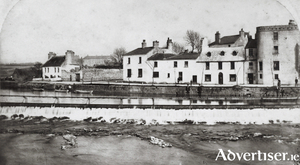
Some 100 years before this photograph was taken, most of the area we are looking at would have been under water, the river covered much of what is Woodquay today. Most of the people who lived in the area would have been small farmers or fishermen, their houses (outside the city walls) made of blocks of stone, often with moss stuffed into the crevices and a roof covered partly with straw, partly with turf. The river provided a rich source of food, though in the city, the fishery, from the Salmon Weir to the sea, was privately owned.
Galvia/Calvary Hospital
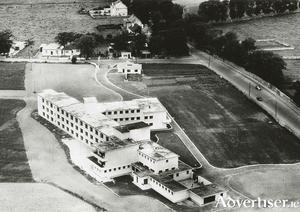
An interesting number of medical institutions were established in Galway in the 20th century. In 1908 the Port Sanitary Intercepting Hospital was built near the docks opposite Forthill Cemetery as quarantine for any suspected cases of cholera or smallpox that might have come in on board ship. It cost £1,000, had 20 beds, and happily it was never needed for its primary purpose and only ever housed three patients. It burnt down in 1966.
Galway County Council website wins national award for commemoration
The National Library of Ireland (NLI) has announced that Galway County Council’s website Decade of Commemoration was one of the ten winning websites, chosen by the public, which they believe best record Irish life in 2016 and remember the events of 1916. The websites will be preserved in the NLI’s National Web Archive and were announced by Minister for Arts, Heritage, Regional, Rural and Gaeltacht Affairs, Heather Humphreys TD, at an award ceremony in the Library’s historic Kildare Street.
Market Street, 1880, a bird’s eye view
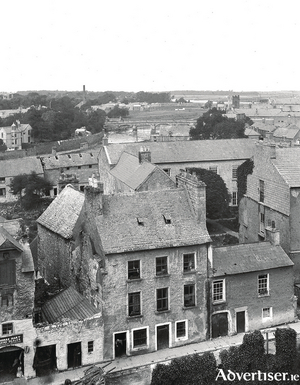
This photograph is part of the Clonbrock Collection in the National Library, and was taken from the tower of St Nicholas’ Church in 1880, looking over Market Street. This panoramic view extends as far as the river. The chimney you see on the horizon was that of Persse’s Distillery. In the distance (you probably will not be able to see it in this reproduction) is the Clifden railway embankment running along the river bank. The building that is now the County Club is near the top left of the picture, the tower of the Mercy Convent near the top right.
Politics and personalities on both sides of the pond
Well I am filled with sadness and I am sure many reading this will feel the same.
Newtownsmith
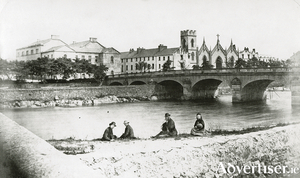
There is a very interesting map of “St Stephen’s Island” in Mary Naughten’s excellent little history of the Parish of St Francis in Woodquay. It is dated 1785 and shows the beginnings of what would be now known as Newtownsmith. It consisted mostly of small houses, yards, malt houses, and a burial ground. This ‘new town’ was largely built by the governors of the Erasmus Smith estate. In this suburb, a county courthouse was erected between 1812 and 1815, and a town courthouse during 1824. In 1823 it was objected that there were several suitable sites for a new courthouse ‘immediately in the town’ and that it was ’quite idle’ to lay foundations in Newtownsmith, or in any part of the suburb.
The Proclamation Of King George V
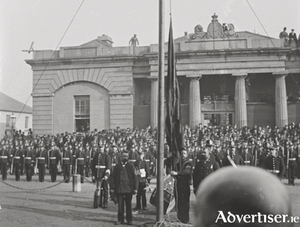
“The accession of His Majesty King George V was proclaimed in Galway at 2 o’clock on Saturday (21st of May, 1910). The ceremony was performed by the High Sherriff, Mr. Cecil R. Henry, and took place opposite the Courthouse. On the steps of the building there was a fashionable gathering. Outside the hollow square formed by soldiers and police, the crowd was one of immense proportions. About one hundred men of the Connaught Rangers, with their band and the King’s colour, under Major Sarsfield, were formed up in line opposite the Courthouse, and an equal number of the Royal Irish Constabulary, drawn from Galway and outside stations, filled up the remaining sides of the square. They were in charge of Co. Inspector Flower, Districts-Inspectors Mercer and O’Rorke.
STRAIGHT TALKING WITH...MARY O’Rourke
It is very difficult to start to think, talk, and write about politics at home when we have had such a weekend of terror and murder in Paris.
Shantalla in 1953
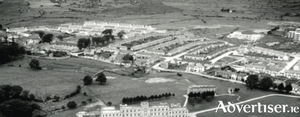
Walter Macken’s first published English language play Mungo’s Mansion was about people in the tenements of Buttermilk Lane about to be rehoused away out in the country, in the wilds of Shantalla. This was causing great distress to the ‘townies’ who would have to move less than a mile as the crow flies.

